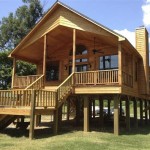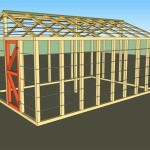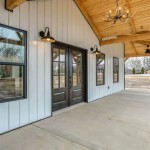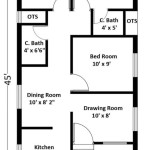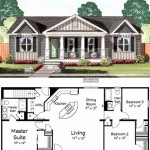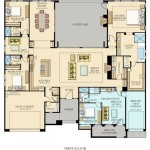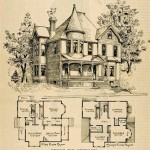Customizable House Floor Plans: Create Your Dream Home Today
The aspiration of homeownership often includes a vision of a dwelling perfectly tailored to individual needs and preferences. The idea of a customized space, designed to enhance lifestyle and accommodate specific requirements, is a powerful motivator for many prospective homeowners. Customizable house floor plans offer a pathway to realizing this dream, providing a framework for creating a residence that is both functional and aesthetically pleasing. This article explores the concept of customizable floor plans, outlining the benefits, considerations, and processes involved in designing a personalized living space.
Traditionally, homeowners were limited to pre-designed floor plans offered by builders or developers. While these options provided a starting point, they often necessitated compromises on preferred layouts, room sizes, or specific features. Customizable floor plans, in contrast, empower individuals to actively participate in the design process, allowing them to adapt existing blueprints or create entirely new layouts from scratch. This level of control translates into a home that more accurately reflects the homeowner's unique lifestyle and priorities. Customization is not simply about aesthetics; it is about crafting a living environment that optimizes daily routines and enhances overall well-being.
The availability of customizable floor plans has increased significantly with the advancement of technology. Sophisticated software and online platforms now enable homeowners to visualize different design options, experiment with layouts, and collaborate with architects and designers remotely. These tools streamline the design process, making it more accessible and efficient for individuals with varying levels of technical expertise. Furthermore, the increasing popularity of sustainable building practices has also influenced the design of customizable floor plans, with many options incorporating energy-efficient features and eco-friendly materials.
Key Benefits of Customizable House Floor Plans
Several key advantages differentiate customizable floor plans from standard, pre-designed options. These benefits directly impact the homeowner's satisfaction, long-term comfort, and the overall value of the property.
Personalized Space Utilization: One of the primary benefits is the ability to tailor the layout and room sizes to specific needs. For instance, a family with young children might prioritize a large, open-concept living area for playtime and family gatherings, while a remote worker might require a dedicated home office with ample storage and natural light. Customizable plans allow for the creation of dedicated spaces for hobbies, exercise, or other personal interests. This targeted approach to space utilization ensures that every square foot of the home serves a purpose and contributes to the homeowner's lifestyle.
Furthermore, the ability to adjust the flow of the home can significantly improve daily living experiences. Thoughtful placement of rooms, strategic incorporation of hallways, and the optimization of natural light can all contribute to a more comfortable and functional living environment. Consider the placement of the master suite; some homeowners may prefer privacy and seclusion at the rear of the house, while others may prioritize proximity to children's bedrooms. Customizable plans offer the flexibility to make these choices based on individual preferences.
Enhanced Accessibility and Adaptability: Customizable floor plans can be designed to accommodate individuals with disabilities or mobility limitations. Wider doorways, ramps, and accessible bathrooms can be seamlessly integrated into the design, ensuring that the home is safe and comfortable for all occupants. Moreover, customizable plans can be designed with future adaptability in mind. For example, a single-story home can be designed with reinforced walls and plumbing connections pre-installed, allowing for the addition of a bathroom or bedroom in the future without significant structural modifications. This proactive approach to design ensures that the home can evolve to meet the changing needs of the homeowner over time.
The ability to incorporate universal design principles is another significant benefit. Universal design focuses on creating spaces that are usable by people of all ages and abilities, regardless of their physical limitations. This includes features such as lever-handled door hardware, adjustable-height countertops, and roll-in showers. By incorporating these elements into the initial design, homeowners can create a more inclusive and comfortable living environment for themselves and their guests.
Increased Property Value: A well-designed, customized home often commands a higher resale value than a standard, pre-designed property. Potential buyers are often willing to pay a premium for a home that offers unique features, efficient space utilization, and a thoughtfully designed layout. Furthermore, a home that is specifically tailored to a particular lifestyle or demographic can be more attractive to certain buyers, expanding the potential market and increasing the likelihood of a successful sale. The long-term investment in a customizable floor plan can therefore translate into significant financial returns.
Beyond the tangible features, the emotional appeal of a customized home can also contribute to its value. A home that reflects the homeowner's personality and lifestyle is often perceived as more desirable and valuable. This emotional connection can be a powerful selling point, influencing potential buyers and driving up the overall perceived value of the property.
Considerations When Choosing a Customizable Floor Plan
While the benefits of customizable floor plans are substantial, careful consideration must be given to various factors to ensure a successful outcome. These considerations include budget constraints, site limitations, and local building codes and regulations.
Budget Planning and Cost Management: Customizing a floor plan can potentially increase construction costs compared to a standard build. It is crucial to establish a realistic budget at the outset and to carefully track expenses throughout the design and construction phases. Factors that can impact costs include changes to the structural design, the selection of premium materials, and the complexity of the architectural details. Working closely with an experienced architect and contractor can help to identify potential cost-saving opportunities and to ensure that the project stays within budget.
Prioritizing essential features and design elements is also critical. Homeowners should carefully consider their needs and preferences and allocate their budget accordingly. It may be necessary to make compromises on certain features to stay within budget, but it is important to ensure that the fundamental elements of the design are not compromised. Furthermore, researching material costs and comparing quotes from different suppliers can help to minimize expenses.
Site Analysis and Constraints: The characteristics of the building site can significantly influence the design of the floor plan. Factors such as the topography, soil conditions, and orientation of the lot must be taken into account. For example, a sloped lot may require a split-level design, while a lot with poor soil conditions may necessitate specialized foundation work. Understanding these site constraints is crucial for creating a floor plan that is both functional and structurally sound.
The orientation of the lot also plays a crucial role in maximizing natural light and optimizing energy efficiency. Orienting the home to take advantage of solar gain in the winter and to minimize solar heat gain in the summer can significantly reduce energy consumption and improve indoor comfort. Furthermore, the placement of windows and doors should be carefully considered to maximize views and to ensure adequate ventilation.
Building Codes and Regulations: All construction projects must comply with local building codes and regulations. These codes are designed to ensure the safety and structural integrity of the building, as well as to protect the environment and the health of the occupants. It is essential to familiarize oneself with the applicable building codes and to ensure that the floor plan complies with all requirements. Working with a licensed architect or contractor who is familiar with local building codes is highly recommended.
Building codes can vary significantly from one jurisdiction to another. It is important to research the specific codes that apply to the building site and to ensure that the floor plan meets all requirements. This may include regulations related to fire safety, energy efficiency, accessibility, and environmental protection. Failure to comply with building codes can result in costly delays and penalties.
The Process of Designing a Customizable Floor Plan
The process of designing a customizable floor plan typically involves several stages, from initial consultation to final approval. Understanding this process can help homeowners to navigate the design process effectively and to ensure a successful outcome.
Initial Consultation and Needs Assessment: The first step is to meet with an architect or designer to discuss the homeowner's needs, preferences, and budget. This consultation provides an opportunity to outline the desired features of the home, the preferred style, and any specific requirements or constraints. The architect will then conduct a thorough assessment of the building site to identify any potential challenges or opportunities.
During the initial consultation, it is important to be clear and concise in communicating one's vision for the home. Providing examples of floor plans, architectural styles, and interior design elements that are appealing can help the architect to understand one's aesthetic preferences. Furthermore, it is important to be realistic about the budget and to be prepared to make compromises if necessary.
Design Development and Iterative Revisions: Based on the initial consultation, the architect will develop a series of preliminary floor plans and elevations. These drawings will provide a visual representation of the proposed design and will allow the homeowner to provide feedback and request revisions. The design development process is iterative, with the architect refining the plans based on the homeowner's input.
During this stage, it is important to carefully review the plans and to provide constructive feedback. Consider the flow of the home, the placement of rooms, and the overall functionality of the design. Don't be afraid to suggest changes, but also be open to the architect's professional recommendations. This collaborative process will ensure that the final design accurately reflects the homeowner's needs and preferences.
Construction Documents and Permitting: Once the final floor plan is approved, the architect will prepare detailed construction documents, including structural drawings, electrical plans, and plumbing diagrams. These documents will be used by the contractor to build the home and will also be submitted to the local building department for permitting. Obtaining the necessary permits is essential for ensuring that the construction project is legal and compliant with building codes.
The permitting process can be time-consuming and complex. It is important to work with an experienced architect or contractor who is familiar with the local permitting requirements. They can help to streamline the process and to ensure that all necessary documents are submitted correctly. Furthermore, it is important to be patient and to allow sufficient time for the permitting process to be completed.
Customizable house floor plans offer a powerful tool for creating a dream home. By understanding the benefits, considerations, and design process involved, homeowners can effectively leverage this option to create a living space that perfectly reflects their individual needs and preferences.

Free Floor Plan Creator Design 2d 3d Layouts Easily

Free Floor Plan Creator Design 2d 3d Layouts Easily

Free Floor Plan Creator Design 2d 3d Layouts Easily

Free Floor Plan Creator Design 2d 3d Layouts Easily

Free Floor Plan Creator Design 2d 3d Layouts Easily

Free Floor Plan Creator Design 2d 3d Layouts Easily

How To Design A House From Sketch Reality

3d Home Design Free Easy House Plan And Landscape Tools Pc Mac

How To Design A House From Sketch Reality

Create And Visualize House Plans In Minutes Roomsketcher
Related Posts

